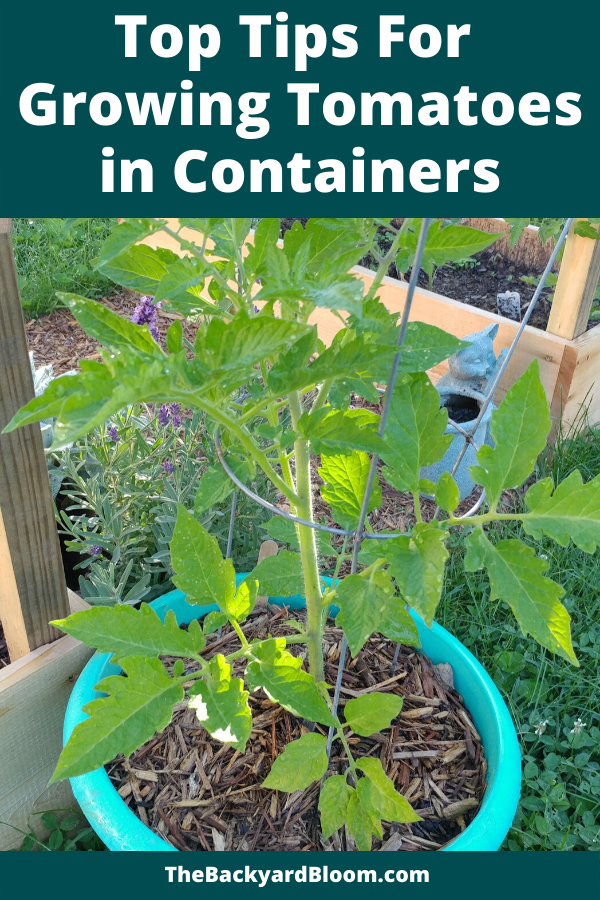Top Tips for Growing Tomatoes in Containers

Top Tips for Growing Tomatoes in Containers
Growing tomatoes in containers is a fantastic way to enjoy fresh, homegrown produce, even if you're short on space. Whether you're an urban gardener or just looking to maximize your outdoor area, container gardening tips can help you achieve a bountiful harvest. Let's dive into the best practices for growing tomatoes in containers.
Why Choose Container Gardening for Tomatoes?
Container gardening offers several advantages. It's perfect for urban gardening, where space is limited. Plus, you can control the soil and water conditions more easily, which is crucial for tomato plant care. Containers also allow you to move your plants around to catch the best sunlight.
Choosing the Best Pots for Tomatoes
Selecting the right container is the first step. The best pots for tomatoes are typically large and sturdy. Aim for pots that are at least 18 inches in diameter and 12 inches deep. This ensures your tomato plants have enough room to grow and develop a strong root system.
Material Matters
The material of your container is also important. Plastic pots are lightweight and retain moisture well, while clay pots are heavier but provide better air circulation. Wooden containers can be aesthetically pleasing but may require more maintenance to prevent rot.
Soil for Container Tomatoes
The right soil is crucial for healthy tomato plants. Soil for container tomatoes should be well-draining and rich in organic matter. A good mix is one part potting soil, one part compost, and one part perlite or vermiculite. This combination provides the right balance of nutrients and drainage.
Preparing Your Soil
Before planting, make sure your soil is well-aerated. You can do this by mixing it thoroughly and ensuring there are no clumps. This helps with drainage and allows the roots to spread easily.
Selecting the Right Tomato Varieties
Not all tomato varieties are suited for container gardening. Determinate tomatoes are generally the best choice because they grow to a certain height and then stop, making them easier to manage in containers. Some popular varieties include 'Patio', 'Balconi', and 'Tumbler'.
Indeterminate Tomatoes
If you prefer indeterminate tomatoes, which continue to grow and produce fruit throughout the season, choose compact varieties like 'Sweet Million' or 'Sungold'. These can be grown in larger containers with proper support.
Planting Your Tomatoes
When planting, bury the stem up to the first set of leaves. This encourages the development of a stronger root system. Make sure your container has good drainage to prevent waterlogging, which can lead to root rot.
Watering and Fertilizing
Tomatoes need consistent watering. Aim to keep the soil evenly moist but not waterlogged. Fertilize your plants every 2-3 weeks with a balanced, water-soluble fertilizer to ensure they get the nutrients they need.
Providing Adequate Light
Tomatoes thrive in full sun, needing at least 6-8 hours of sunlight per day. If you're growing indoors or in a shady area, consider using grow lights to supplement natural light.
Temperature Control
Tomatoes prefer warm temperatures, ideally between 70-85°F (21-29°C). Protect your plants from extreme heat or cold, as this can affect their growth and fruit production.
Pest and Disease Management
Container gardening can help reduce pest and disease issues, but it's not foolproof. Regularly inspect your plants for signs of pests or diseases. Use organic or chemical treatments as needed, following the instructions carefully.
Preventive Measures
Prevention is key. Ensure good air circulation around your plants and avoid overwatering. Rotate your crops to prevent the buildup of soil-borne diseases.
Harvesting Your Tomatoes
The best part of growing tomatoes is the harvest. Pick your tomatoes when they are fully ripe and slightly soft to the touch. Store them at room temperature to maintain their flavor and texture.
Storing Your Harvest
If you have a bountiful harvest, consider preserving your tomatoes by canning, freezing, or making sauces. This way, you can enjoy your homegrown tomatoes year-round.
Common Mistakes to Avoid
Even experienced gardeners make mistakes. Common pitfalls include overwatering, underwatering, and not providing enough light. Pay close attention to your plants' needs and adjust your care accordingly.
Overcrowding
Avoid overcrowding your containers. Too many plants in one pot can lead to competition for resources and increased risk of pests and diseases.
Conclusion
Growing tomatoes in containers is a rewarding experience that can yield delicious results. By following these tips for growing tomatoes in containers, you can enjoy fresh, homegrown tomatoes even in the smallest of spaces. For more detailed information, check out this guide on growing tomatoes in containers.
FAQs
What are the best tomato varieties for containers?
- Determinate varieties like 'Patio', 'Balconi', and 'Tumbler' are excellent choices for container gardening.
How often should I water my container tomatoes?
- Water your tomatoes consistently, keeping the soil evenly moist but not waterlogged. Frequency depends on weather conditions and plant size.
What kind of soil is best for container tomatoes?
- A well-draining mix of potting soil, compost, and perlite or vermiculite is ideal for container tomatoes.
How much sunlight do tomatoes need?
- Tomatoes need at least 6-8 hours of sunlight per day to thrive.
How can I prevent pests and diseases in my container tomatoes?
- Ensure good air circulation, avoid overwatering, and regularly inspect your plants for signs of pests or diseases. Use organic or chemical treatments as needed.
0 Response to " Top Tips for Growing Tomatoes in Containers"
Post a Comment